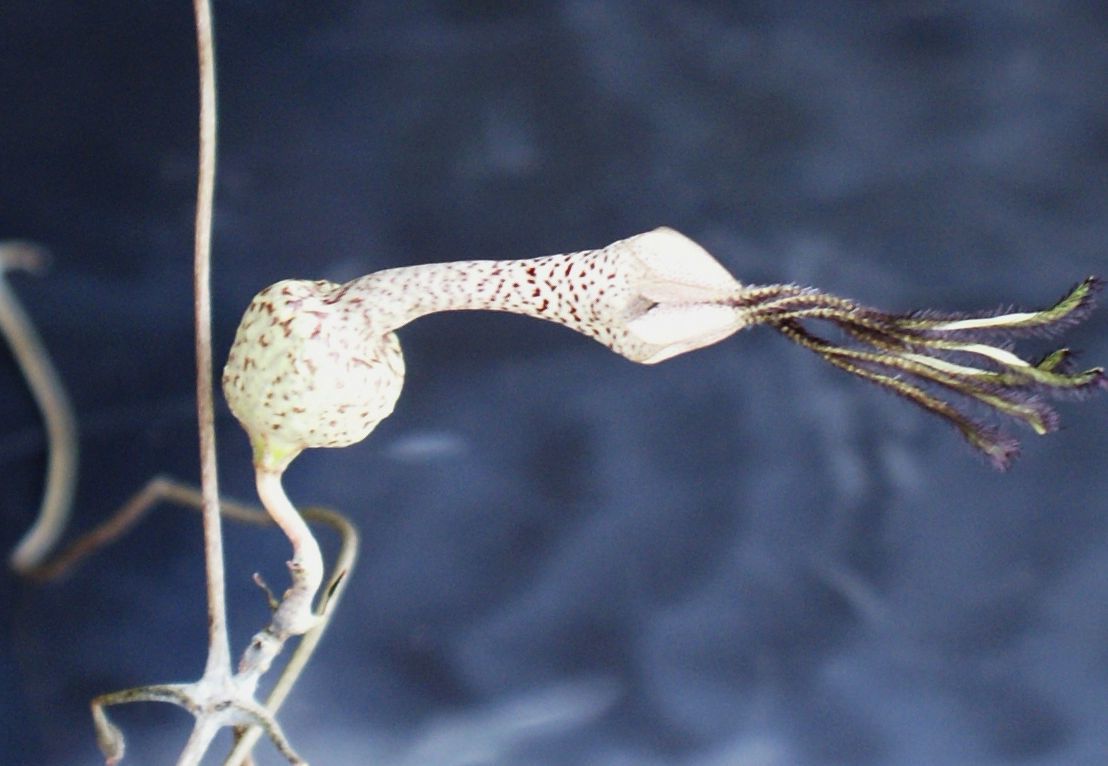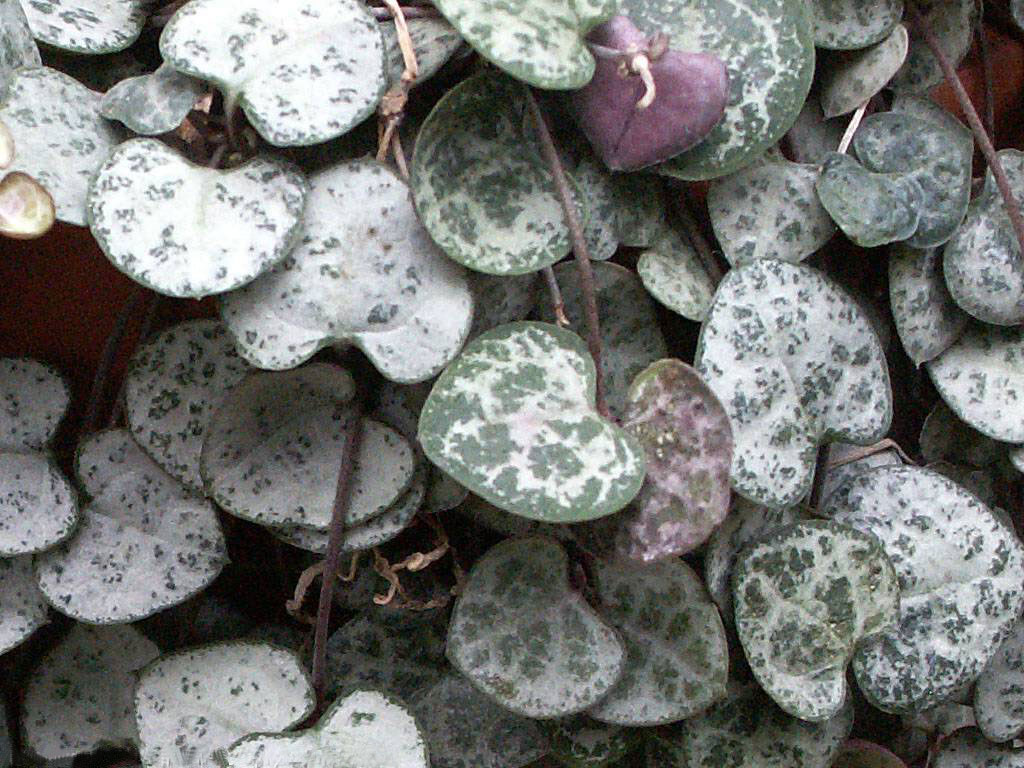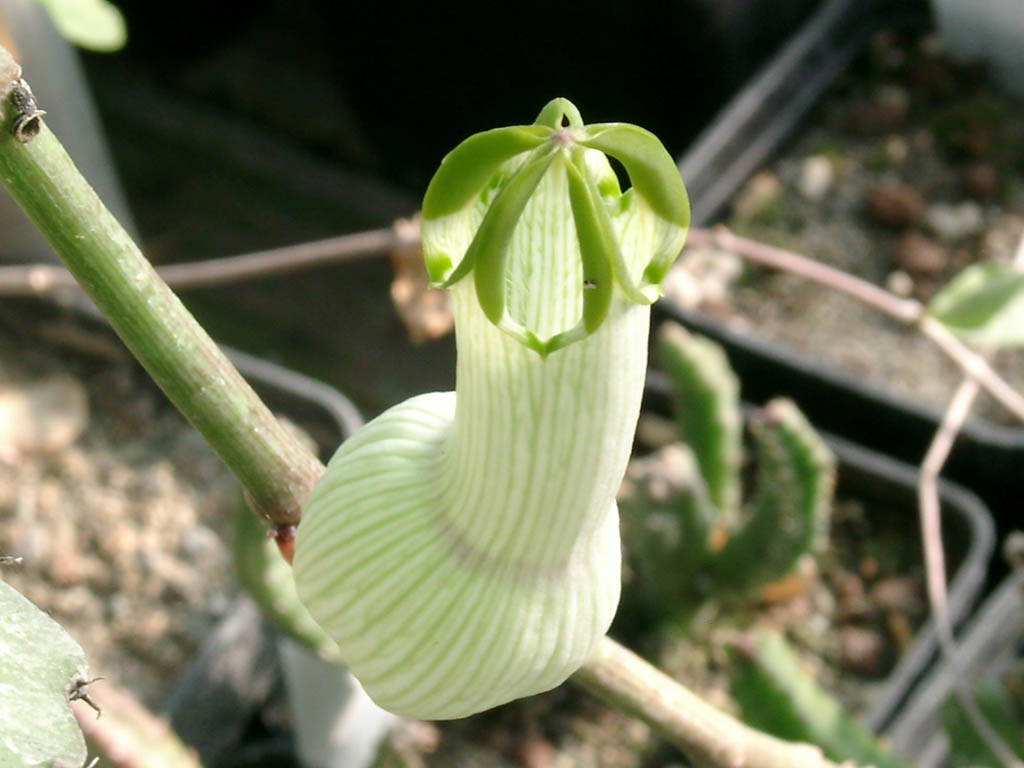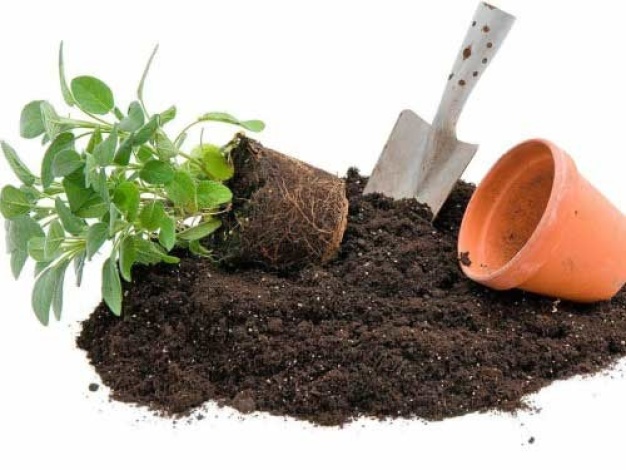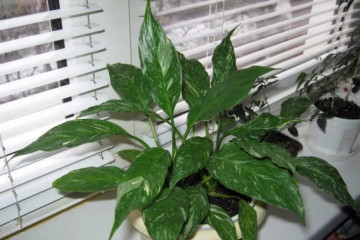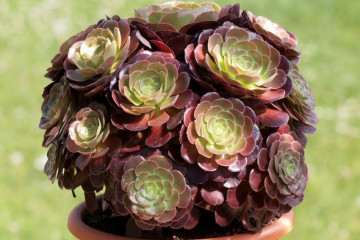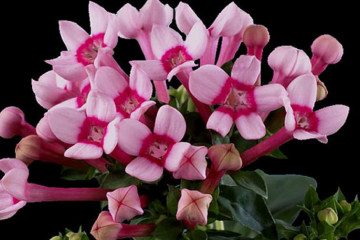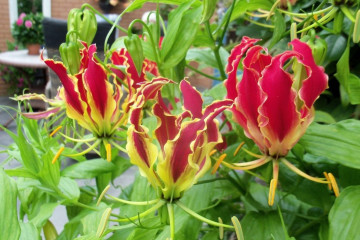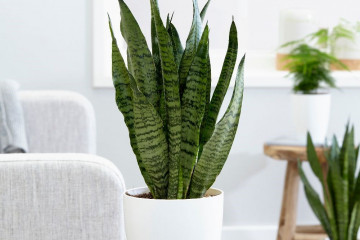Wood's ceropegia - home care
Content:
Ceropegea belongs to the genus Lastovnevye, it is not so common in nature (it can only be seen in tropical forests). The name comes from Greek, translated into Russian means "candelabrum" (an unusual type of vine). The family includes more than 180 species, some of which are actively cultivated by flower growers.
Wood
Wood's ceropegia (or, as it is also called, Woody's ceropegia) has gray tuberous roots, which often surprise novice growers with their similarity to potato tubers and purple creeping stems.
It has dense, fleshy foliage 15 mm wide and 20 mm long, usually triangular or ovoid. The leaves are marbled on one side and greenish or purple on the other.
With high humidity, roots appear on the tubers of the plant, which are later used for reproduction of the ceropegea. Also, Wood's ceropegia is notable for its small but very beautiful flowers with a light flesh-colored corolla and dark brown petals. They bloom throughout the year with proper care.
All ceropegias require the same care without frills, which is why flower growers love them so much.
Variability
All species belonging to the genus Ceropegia are variegated. This means that the leaves contain mutated cells that are unable to synthesize chlorophyll. It is for this reason that white spots appear on the stems and leaves (where these cells are located). Most variegation is observed in Wood's ceropegia, which, as noted earlier, has an unusual color.
Sanderson's ceropegia
The stems of this species are usually long and thin, gently spreading over the surface, and the leaves are soft, fleshy, about 40 mm wide and 50 mm long. They resemble a heart in shape. On the seamy side of the sheet plate, a convex central vein can be observed. There are also short low-flowered inflorescences. The green corolla, which acquires a lighter color in the area of the pharynx, reaches a length of 70 mm.
It is recommended to grow Sanderson's ceropegia on supporting structures, since the stems of the plant will braid it like a long green snake. To create a support, it is worth using special ladders or tree branches.
Ampliata
Ceropegia Ampliata is a climbing plant with absolutely bare shoots. This species has small, scaly leaves that fall off rather quickly. The corolla tube looks like a white and green tiara because of its shape. These are five perianth petals, whose tips have grown together.
Linearis
Many people who are professionally engaged in floriculture note that the type of Ceropegia Linearis is very similar to Wood's ceropegia. At the first glance at the plants, you can see almost the same long and thin shoots, braiding the support, and shiny leaves, which are shaped like a heart. An important difference is the absence of light spots on the stems and the leaf blade in Ceropegia Linearis.
Ceropegia: home care
It is believed that all species belonging to the genus Ceropegia are quite easy to grow, and they are not picky about care, and therefore they are recommended for novice growers.
Watering
The plant should not be watered too often and abundantly. Ceropegia is a vine, and therefore is very susceptible to root rot. To avoid problems, it is worth carefully monitoring the water balance of the plant. In the summer it is worth watering when the top layer of the soil dries out (not earlier!), And in autumn and winter, an abundant amount of moisture should not be allowed (in the cold season, it is optimal to water once every 1.5-3 weeks).
It is better to use soft water for creepers, as recommended by many experienced flower growers, separated and warm. It is also important to sponge the leaves occasionally to remove dust.
Important:
- every few years it is imperative to update the plant - to remove old elongated shoots;
- ceropegia should always have good support, which will not allow the plant to get too tangled (when transporting vines, this can cause a lot of problems).
Climate
12 hours of daylight hours are required all year round. However, it should be noted that these should not be direct rays (vines always grow in the shade of other trees). The best option would be to choose an east or west window.
It is also important to know that this flower is thermophilic. In the room in which the plant is located, it is worth maintaining the temperature from 21 ° C to 25 ° C. However, in autumn and winter, a temperature of 15 ° C is permissible, so that the plant goes into hibernation, slows down the growth and development of shoots.
The soil
In order for the plant to grow well at home, you need to properly prepare the soil for it. Important components of the earthen mixture, which must be taken in equal parts:
- humus;
- two types of land (turf and leaf);
- river sand (do not take fine sand);
- fine charcoal;
- pine bark;
- brick chips.
It is advisable to take a pot such that water does not accumulate there (it is easier to care for), remaining after watering the plant. The drainage height should be a quarter of the total displacement of the vessel.
Plant transportation, reproduction
The most important rule is to change the pot for a young flower once a year, and for a mature one - in several years. When transporting vines, in no case should the roots be damaged, and therefore usually several people are engaged in this at once.
Here are several ways to propagate a plant:
- stalk (most often used in floriculture);
- division of roots;
- seeds.
Ceropegia are amazing plants that are unpretentious and suitable for any novice florist or ordinary person who wants to decorate their home with exotic flowers.
